U. S. Geological Survey Open-File
Report 01-041
A Laboratory Manual for X-Ray Powder
Diffraction
ETHYLENE GLYCOL TREATMENT
Organic liquids, primarily ethylene glycol and glycerol, are extensively used as an auxiliary treatment to expand swelling clays. Whether or not a mineral expands and the amount of expansion can provide essential supplementary information aiding clay-mineral identification. Swelling clays include smectites (e.g. montmorillonite, nontronite, and beidellite), some mixed-layer clays, and vermiculite.
Two methods are presented here: a vapor treatment and a rapid method. The advantage of the vapor treatment is less disturbance of the sample and less amorphous scattering of X-rays by excess liquid than in the case of the rapid method.
| ETHYLENE GLYCOL VAPOR TREATMENT |
Materials Required:
-
ethylene glycol
- oven
- desiccator
- desiccator shelf
|
 |
| Pour ethylene glycol to about 1 cm depth in base of desiccator. |
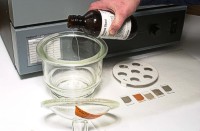 |
| Place oriented aggregate mounts on the shelf of desiccator. Additional shelves may be stacked if necessary. |
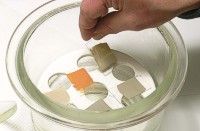 |
| Place desiccator in oven at 60 to 70 C for about 4 hours or overnight. Longer times will not hurt samples. Do not remove mounts until they are to be run on the X-ray
diffractometer. |
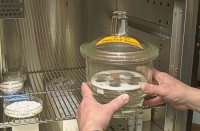 |
|
| |
|
| ETHYLENE GLYCOL RAPID METHOD |
Materials Required:
-
ethylene glycol
- glass rod
- lab tissue
|
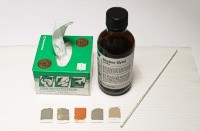 |
| Apply a drop of ethylene glycol directly to the surface of the oriented aggregate mount with the glass rod. Spread the ethylene glycol if necessary. |
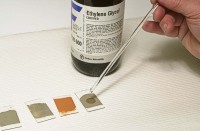 |
| Mounts are ready to be X-rayed as soon as liquid is uniformly absorbed. Excess ethylene glycol may be gently mopped up with lab tissue. |
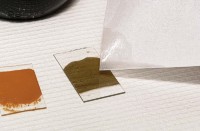 |
